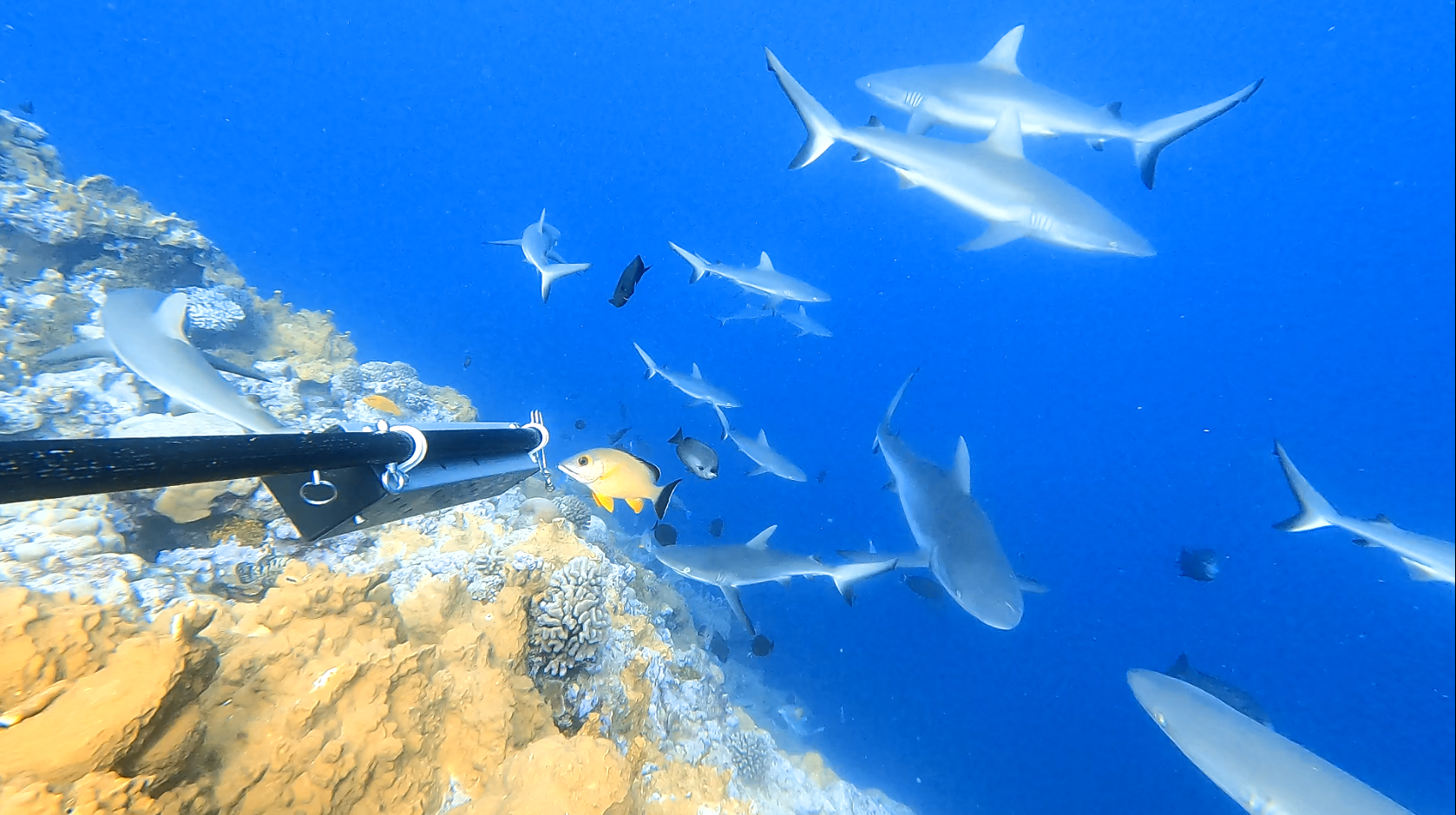Impact Initiatives
The Great West Ozzie Transect (GWOT)
2013 - present
In 2018, the Australian Government established 22 “big blue” Commonwealth Marine Parks along the West Australian Coast. These marine parks are typically in offshore waters but we know little about the ocean wildlife that occupies them. Zoning that ranges from highly protected (IUCN I and II) to partial protection (IUCN IV and VI) allows us to explore how ocean wildlife responds to different levels of protection. We conduct mid-water baited remote underwater video system (BRUVS) surveys, 34 to date at 10 of these parks, to characterise their ocean wildlife, improve our understanding of their ecology and provide benchmarks and times series against which the effects of protection can be assessed. Data from completed surveys can be found here
Very large marine protected areas (MPAs) are increasingly being established in the Exclusive Economic Zones (EEZs) of many countries globally. We document the diversity, distribution, behaviour and ecology of ocean wildlife to assist in establishing MPAs and to provide the baselines against which the effectiveness of protection can be determined. To date, 70 pelagic and 41 reef surveys have been done in 15 countries. A particular focus continues to be the EEZs of the UK Overseas Territories.
2013 - present
Sharks as ecosystem regulators
Increasing evidence suggests that some species of sharks are ecosystem regulators, much like wolves on land. Through both fear and predation they can control the behaviour and abundance of mid-sized predators with knock on effects down the food web. We are extending our work on coral reefs to temperate reefs and pelagic habitats and through the consideration of prey-scapes.
2017 - present
Novel ecosystems
Offshore oil and gas platforms are decommissioned when they are no longer productive. In most jurisdictions, the owners of the platforms are required to remove them. However, in some locations, platforms can be left in place – either toppled to the seabed or having their top structure removed so they remain subsurface. Many platforms are at sea for upwards of 40 years, becoming ecosystems in their own right. We are conducting research on the degree to which these novel ecosystems contribute ecosystem services.
Other areas of interest include climate change and ocean deoxygenation, the effects of noise on ocean wildlife, the location of shark nurseries, the impact of recreational fishing, pelagic shark behaviour, predictive modelling, and biogeography.
We also collaborate on seabird ecology and fisheries analysis.
Global ocean wildlife benchmarks to support conservation
Policy
First Nation’s knowledge driving conservation outcomes
The National Geographic Society’s Pristine Seas Programme was established to find, survey, and help protect the last wild places in the ocean. We have joined the Pristine Seas team to provide the first non-destructive and quantitative data on the open-ocean sharks and fishes of these wild places, with mid-water camera surveys undertaken in Palau (2014), Rapa (French Polynesia) (2014) , the Ilhas Selvagens (2015), Clipperton Islands (2016), Niue and Beveridge Reef (2016), Revillagigedo Islands (2016), Tristan da Cunha (2017), Ascension Island (2017) , Malpelo (2018), Azores (2018) and Osa Peninsula (2019).
2023 - present
The National Geographic Society’s Pristine Seas Programme was established to find, survey, and help protect the last wild places in the ocean. We have joined the Pristine Seas team to provide the first non-destructive and quantitative data on the open-ocean sharks and fishes of these wild places, with mid-water camera surveys undertaken in Palau (2014), Rapa (French Polynesia) (2014) , the Ilhas Selvagens (2015), Clipperton Islands (2016), Niue and Beveridge Reef (2016), Revillagigedo Islands (2016), Tristan da Cunha (2017), Ascension Island (2017) , Malpelo (2018), Azores (2018) and Osa Peninsula (2019).
Research infrastructure, science to support decision making
2019 - present
The National Geographic Society’s Pristine Seas Programme was established to find, survey, and help protect the last wild places in the ocean. We have joined the Pristine Seas team to provide the first non-destructive and quantitative data on the open-ocean sharks and fishes of these wild places, with mid-water camera surveys undertaken in Palau (2014), Rapa (French Polynesia) (2014) , the Ilhas Selvagens (2015), Clipperton Islands (2016), Niue and Beveridge Reef (2016), Revillagigedo Islands (2016), Tristan da Cunha (2017), Ascension Island (2017) , Malpelo (2018), Azores (2018) and Osa Peninsula (2019).
2012 - present
2021 - present





























